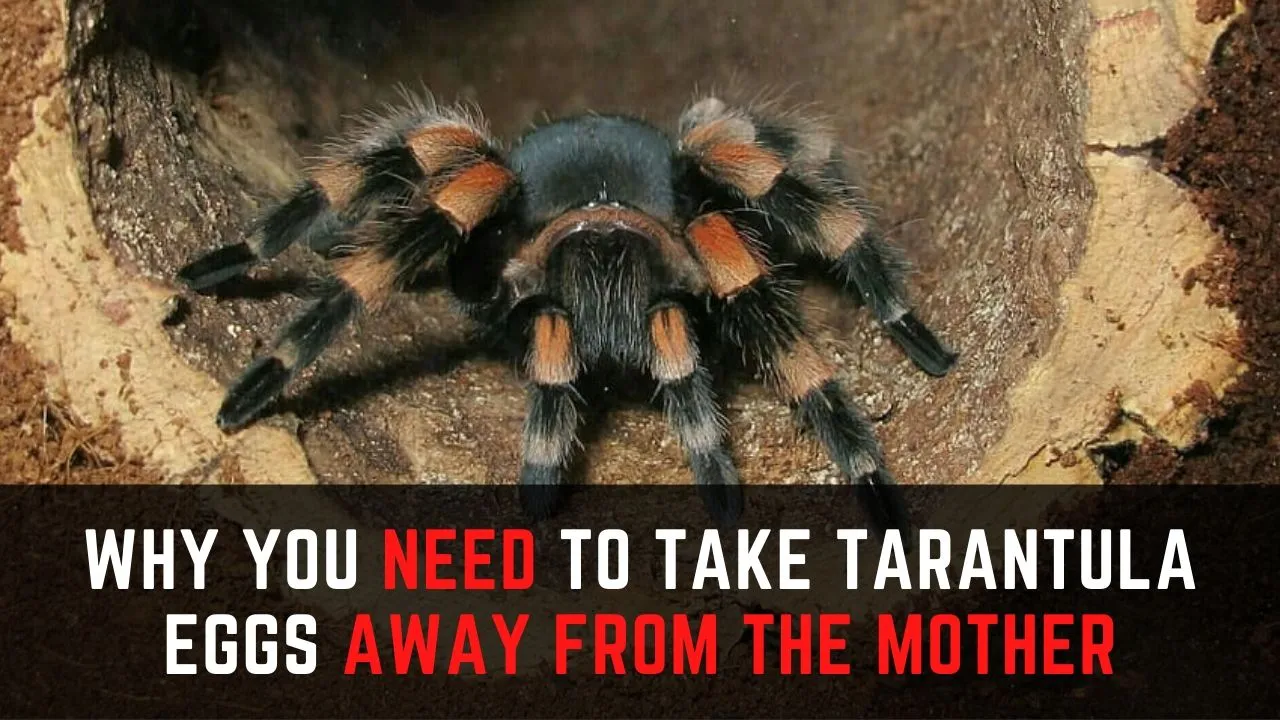Breeding tarantulas can be a fascinating and rewarding experience for any arachnid enthusiast. One of the most critical aspects of successful tarantula breeding is understanding when to pull the egg sac. Timing is everything when it comes to maximizing the chances of healthy spiderlings. This article will explore the key factors influencing the decision on when to pull a tarantula egg sac, offering five crucial tips to guide you through the process and ensure the best possible outcome for your spiderlings. It requires knowledge and patience, so be sure to follow the guides and tips to ensure your success.
Understanding Tarantula Egg Sacs
Before delving into the specifics of when to pull a tarantula egg sac, it’s essential to understand what an egg sac is and the development process inside. This knowledge forms the foundation for making informed decisions about timing and care. This section aims to provide a comprehensive overview of the egg sac’s significance and the biological processes at play, allowing you to approach the topic with a solid understanding of the subject.
What is a Tarantula Egg Sac
A tarantula egg sac is a silken pouch created by the female tarantula to protect and incubate her eggs. The female spins a web and deposits her eggs, then covers them with more silk, effectively creating a safe environment for the developing embryos. The egg sac is typically spherical or slightly elongated, depending on the species of tarantula. The silk acts as a protective barrier against predators and environmental fluctuations, maintaining a stable environment for the eggs until they hatch into spiderlings. The egg sac is a crucial part of the tarantula’s reproductive cycle, ensuring the survival of the next generation. (Image tarantula-egg-sac.webp)
The Development Cycle Inside

Inside the egg sac, the tarantula eggs undergo a series of developmental stages. Initially, the eggs are simple, undifferentiated cells. Over time, they develop into pre-larvae, which are essentially miniature versions of the adult tarantula, but they are still unable to move or feed independently. These pre-larvae will then molt inside the egg sac, transforming into the first instar spiderlings. This is when they will start looking like tiny tarantulas. The entire development process, from egg to spiderling, can take several weeks to months, depending on the species and environmental conditions. (Image tarantula-female.webp)
Factors Affecting Pulling Timing
Several factors influence the optimal timing for pulling a tarantula egg sac. Understanding these elements is crucial for making the right decision. The species of the tarantula, environmental conditions, and visible signs from the egg sac all play significant roles in determining the best time to intervene and remove the sac from the female. Careful consideration of these aspects can significantly improve the chances of a successful outcome and healthy spiderlings. Therefore, a deeper look into these factors is required for anyone interested in breeding.
Species of Tarantula
Different tarantula species have varying incubation periods and developmental rates. Some species, like the fast-growing Brachypelma, might have shorter incubation periods, while others, such as some of the larger Theraphosidae, may take significantly longer. Researching the specific species of your tarantula is essential. Understanding its typical incubation time frame will provide a baseline for your observation and decision-making process. Consulting with experienced breeders or referring to species-specific guides can provide invaluable insights into what to expect. (Image tarantula-species.webp)
Environmental Conditions

Temperature, humidity, and ventilation all impact the development of the eggs within the sac. Maintaining the right environmental conditions is crucial for successful incubation. Generally, tarantulas thrive in temperatures ranging from 75°F to 85°F (24°C to 29°C) and humidity levels between 60% and 80%. High humidity and warmth are usually required, but it’s vital to ensure adequate ventilation to prevent mold growth. Fluctuations in temperature or humidity can potentially harm the developing eggs, so monitor these parameters carefully and make adjustments as needed. Use a thermometer and hygrometer to monitor, and adjust the environment accordingly. (Image tarantula-environment.webp)
Signs the Egg Sac is Ready
Observing the egg sac for specific signs is a crucial part of determining when to pull it. Several visual cues indicate the eggs are nearing the hatching stage, signaling the time for intervention. By paying close attention to these indicators, breeders can make informed decisions and optimize the chances of success. These signs are often subtle and may vary slightly depending on the species of tarantula, but understanding them is vital.
Color Changes
One of the most noticeable indicators is a change in the egg sac’s color. Initially, the egg sac may appear a uniform, pale color, usually white or light cream. As the eggs develop, the sac may darken slightly. The color of the sac may change to tan or even a light brown. These color changes usually indicate that the spiderlings inside are nearing the first instar stage. This color change can be a reliable indicator of the sac’s readiness and should be closely monitored. (Image egg-sac-color-change.webp)
Webbing Appearance

The appearance of the webbing surrounding the egg sac can also provide clues. As the spiderlings mature, the webbing might become denser. Furthermore, changes to the webbing may signal the time for removal, so observation is key. If the webbing has a different texture than the surrounding area, it might be a sign that removal is near. Although the webbing is usually the same throughout, a difference should be noted. This aspect requires close inspection and a degree of experience in order to be interpreted accurately.
Timing is Everything
When to pull a tarantula egg sac is a matter of careful observation, research, and experience. Several factors affect the timing, but following these tips can increase the success rate. This section offers five key tips to help guide you through the process. Keep in mind that every situation is unique, and adapting these tips to your circumstances is important. The best timing comes from a combined effort of all the following items, so keep them in mind.
Tip 1 Observe the Egg Sac
Regular observation is essential. Monitor the egg sac closely for changes in color, size, and webbing appearance. Make detailed notes of any alterations. These observations are key to determining when to pull the egg sac. Frequent visual checks will help you understand the developmental stages, and you’ll gain valuable insights into your tarantula’s specific reproductive cycle. Don’t miss even the smallest changes, as they can be a sign of readiness. Keep track of the date to establish a timeline.
Tip 2 Research Your Species

Each tarantula species has a unique gestation period. Research the average incubation time for your species. Knowledge of the normal timeframe is crucial for setting realistic expectations and anticipating when to intervene. Knowing the typical duration will allow you to be prepared and to monitor the egg sac with greater focus. Various online resources, scientific publications, and breeder communities can provide this vital information. Knowing how long is considered normal will aid in making the correct decision.
Tip 3 Consider the Female’s Behavior
Observe the female’s behavior. If she is neglecting the egg sac, it might be a sign that it’s time to intervene. Sometimes, the female tarantula will stop caring for the sac, possibly because of stress, injury, or other factors. In such cases, pulling the egg sac and providing artificial incubation might be the only way to ensure the survival of the eggs. If the female is constantly moving the egg sac around, or if she is not showing typical maternal behavior, it may be the right time to pull it. Watch the female closely and notice the signs of behavior that signal the best time for removal.
Tip 4 The 3-4 Week Rule
As a general guideline, many experienced breeders pull the egg sac approximately 3–4 weeks after it has been created. This timeframe is a good starting point for many species, assuming the environmental conditions are optimal. The general rule is not a hard-and-fast rule, and adjustments may be needed based on the specific species and observed development. The best approach combines the visual cues, species-specific knowledge, and the general timeframe for the best outcome. This general rule is a good method to begin with.
Tip 5 Post-Pull Care

After pulling the egg sac, proper care is crucial. This involves incubation in a controlled environment. Maintaining the correct temperature, humidity, and air circulation will maximize the chances of successful hatching. The goal is to replicate the conditions the mother tarantula would have provided. You may need to construct a makeshift incubator to maintain the perfect environment for your spiderlings. Proper care is vital to ensure the hatchlings thrive, so research and prepare accordingly. Remember that the egg sac is delicate, and you will need to handle it with care. (Image incubating-egg-sac.webp)
Post-Pull Care for Egg Sac
After removing the egg sac, the focus shifts to post-pull care. This involves two main aspects incubation and raising the spiderlings. Proper care during these stages is essential for the survival and well-being of the spiderlings. Incubating the eggs in an ideal environment will determine whether the egg sac is successful, and you should ensure that the spiderlings have everything they need to start their lives. These two steps are crucial to the success of breeding the tarantula eggs.
Incubation
Once the egg sac has been pulled, it must be incubated. This entails providing a consistent environment with the right temperature and humidity. Use an incubator or create a setup that mimics the conditions inside the female’s enclosure. Monitor the temperature and humidity levels using a thermometer and hygrometer, and make any necessary adjustments. Ensure adequate ventilation to prevent mold growth, and regularly check the egg sac for any issues. Proper incubation is the key to the success of the hatching of the eggs.
Raising Spiderlings

After the spiderlings hatch, they require specific care and attention. This includes providing small, appropriate food items, such as fruit flies or pinhead crickets. Keep the spiderlings in a well-ventilated enclosure with adequate moisture. Separate them into individual containers as they grow to prevent cannibalism. The first few molts are critical for their development, and consistent care is necessary during this time. Research the specific needs of your species and provide them with the correct conditions to allow them to grow into healthy adults. (Image spiderlings.webp)
Conclusion
Deciding when to pull a tarantula egg sac is a crucial step in successful breeding. Understanding the tarantula’s egg sac, the factors influencing timing, and the importance of post-pull care is essential. By following these tips and conducting thorough research, you can improve your chances of successfully breeding your tarantulas and raising healthy spiderlings. It’s a process that requires patience and dedication, but the reward of seeing a new generation of tarantulas is well worth the effort. With the knowledge and care, you will have the opportunity to witness the wonders of tarantula breeding. (Image tarantula-egg-sac.webp)
